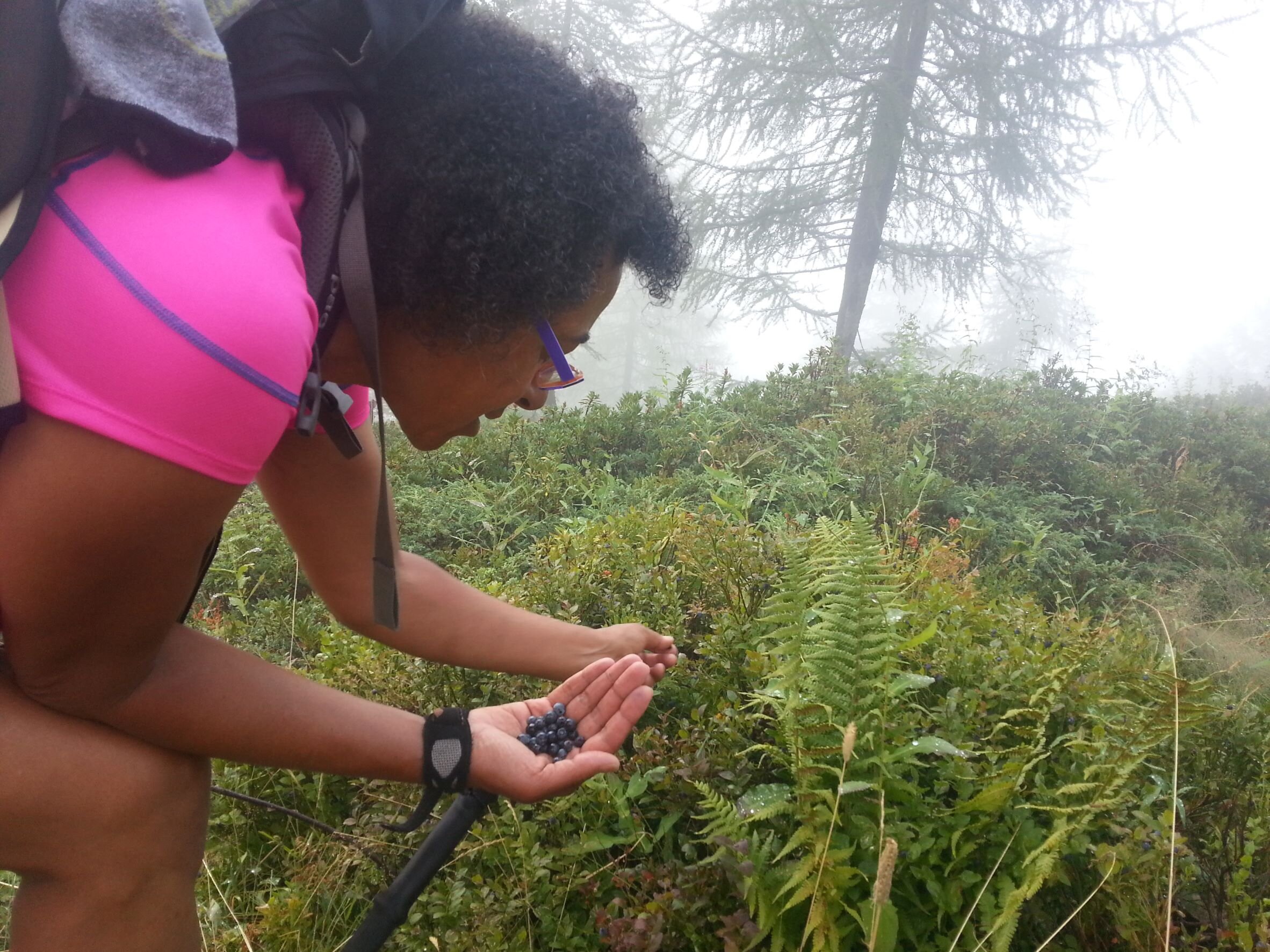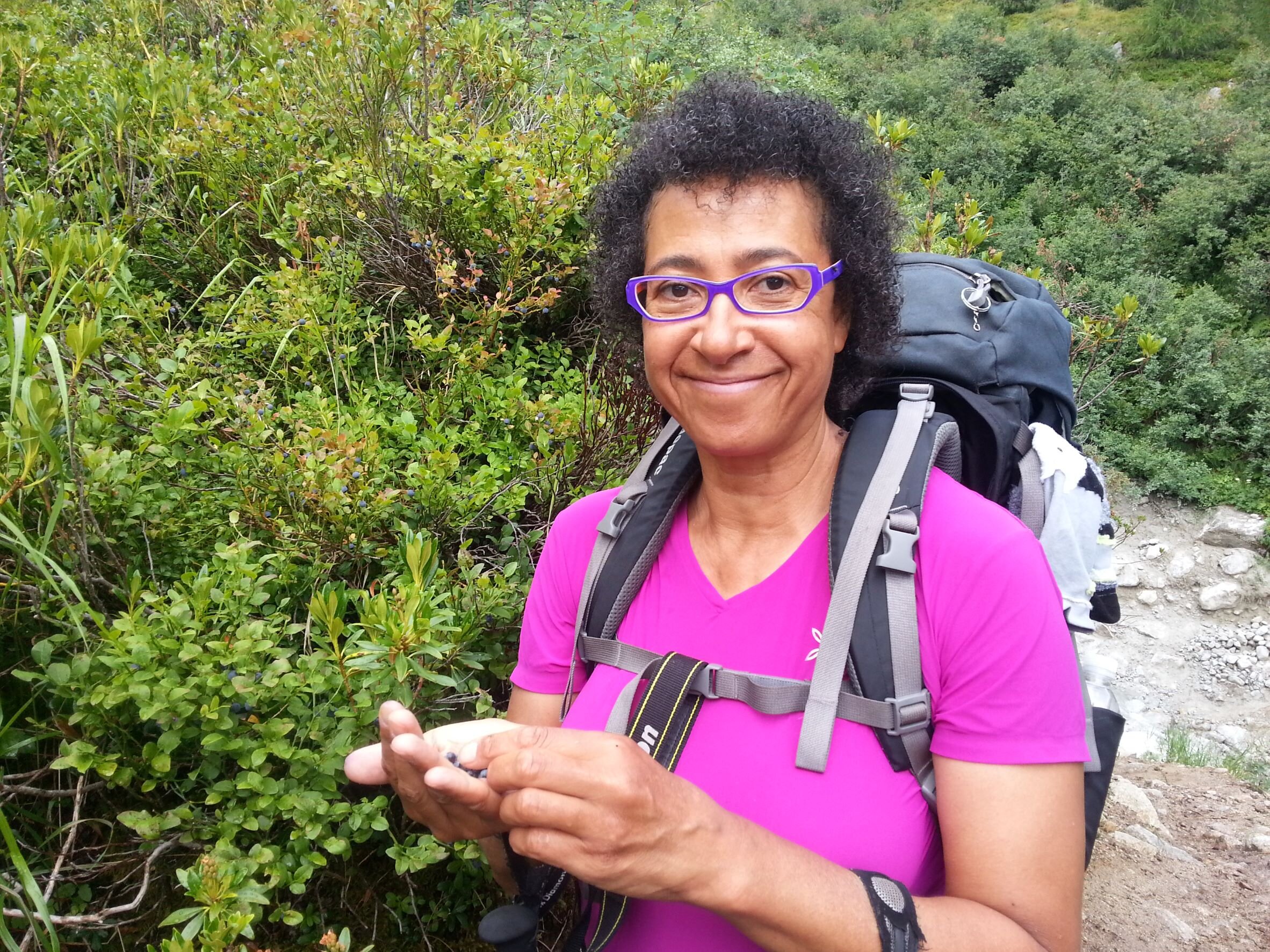The FU Stop, or How Not to Hike with a Partner
(A Rebuttal of In Praise of the "F You" Stop).
This article is for all hikers who struggle to keep up, who think they walk too slowly, and especially for hikers who think their partner walks too slowly.
No FU Stops on this lovely day walk with friends in New Zealand!
The Slinky Stop. The Accordion Effect, The Caterpillar Effect, The Bungy Cord, The Slingshot. We all know it. It’s when you’re hiking with another person or group, and are struggling to keep up. They wait for you to reach them and, the moment you do, off they go, refreshed and energetic. No time for you to refresh or reenergise, because you’ll fall even further behind. So off you hurry, trying to stay with them.
An hour later, the same thing happens. And again. And each time you’re more exhausted and more dismayed. This, Dear Reader, is the FU (F*%k You) Stop. And if there is one thing we can predict with reasonable certainty, it is that you won’t be hiking with that person again. In fact, you may not even like them as much at the end of the day as you did at the start! After all, they’ve been telling you to get f$*^#d all day, it’s no surprise a little of their shine has worn away!
Four decades and still no “hiking” FU Stops!
What happens when a hiking partner is constantly subjected to FU Stops?
Discussion in different groups and forums suggests that, although a small minority don’t mind, the significant majority respond in this vein:
“I stopped hiking in groups.”
“I no longer hike with my partner,” even, “My partner's FU Stops contributed to our divorce. He thought it was funny.”
“My *ex* did this.”
“I still remember ‘Fat Boy Tears’ from Scout hikes.”
“I hated that hike.”
“If you want to turn someone off hiking, just keep on doing those fu stops.”
“That’s why I hike alone.”
“I had a friend who did this. Hiking with her was miserable.”
“I finished the hike and cried.”
“It is horrendous.”
This trio of young lasses have stopped for a NON-FU Stop together to enjoy the view.
Are there Exceptions?
So okay, we’re crusty old farts going out on a limb here. We’re grumpier than we used to be.
Some people suggest there is a place for the FU Stop. PRETEND you don’t realise they’re struggling! PUSH them on, they’ll thank you for it! Yeah… nah. Nah they won’t. We’re highly sceptical of this as a longterm strategy for any hiking partnership, especially when it is your significant other, because it is both patronising and manipulative. It might work once. Perhaps a second time. Third hike, your partner will almost certainly have something better to do on the scheduled day.
Now there is an exception but, if you want your hiking partner to remain your hiking partner, do not do the FU Stop. What exception, you ask?
There is only one: when both of you have agreed to Slinky Stops.
Communication is a two-way street. Empathetic hikers quickly realise their partner is struggling to keep up, but it’s also up to the slower hiker to raise the issue if it is a problem that hasn’t been noticed: faster hikers aren’t mind readers and may be unaware, rather than uncaring. And some slower hikers may not have a problem: either way, incorrect assumptions are instantly and easily corrected through open and direct communication.
So perhaps you’re both equally experienced and have agreed to what can now be called a Slinky Stop, because there is no F-You involved! The slower one might be falling behind not because they’re less fit or strong, but because they’re taking photos and enjoying views…
Or because they’re picking and eating berries! (Mt Blanc).
Or perhaps the slower hiker is perfectly okay with the faster one taking off: the slower hiker will take a rest and then follow. As long as there are no safety issues – you both have first aid kits/PLBs/all the gear you need to be independent, OR you are not too far apart to help each other out should an accident happen, all is well.
The only time a “FU Stop” is a positive way to hike with a partner is when both of you have agreed to Slinky Stops.
Other Hiking Styles for Twosomes
There are numerous other hiking styles. When gathering our thoughts on this topic, we researched the FU Stop in a few groups and forums. Some people hike together-together, with one slowing their natural pace to accommodate the other. This is what we do, because we like to share the experience. Obviously, there is no FU Stop involved.
Although it seems from photos that Geoff is always ahead, this is only the case on steep downhill sections, when he is slower. The rest of the time, he is behind moderating his pace to suit mine, unless asked to go ahead to be in the shot for scale!
Or two experienced hikers may start the day together, and only meet up at again at lunch, or at the end of the day in camp. Both are carrying all they need independently – first aid kit, tent, sleeping gear, PLB etc – so both are safe and responsible for themselves. This “alone-together”, common on long-distance thru-hikes, is not a FU Stop.
Or the faster hiker may go ahead, wait for the other to catch up, spend ten minutes or so together, before they head off, with the faster one getting further ahead again. This is not a FU Stop. They will have agreed times or places to meet, and know how to respond if the planned rendezvous doesn’t happen within that timeframe.
Some duos alternate in taking the lead: when the slower hiker catches up at a break, they lead the next leg and only begin when they're rested. The faster hiker gets some "extra" rest. In fact, any other way that you can possibly think of hiking together as a couple is good… when you have both discussed and agreed to it.
There can be seemingly good reasons for a faster hiker not to wait for a slower one, particularly if there is a certain distance to cover before a safe campsite, or at altitude in cold, when the faster hiker may become hypothermic. If you are hiking as partners (sharing tent, kitchen, first aid kit, etc) in these situations, the faster hiker might assume a slower hiker’s speed is due to laziness, lack of discipline or mental fortitude when, ironically, someone struggling at the back the entire way may have more mental fortitude than those skipping along effortlessly at the front!
Few people like to be the one holding others back. For them, the walk becomes about nothing else but trying to keep up: no views, no companionship, no fun whatsoever.
A lovely multiday hike with family through Tuscany –
we all walked “together-together”.
If the slower hiker is genuinely going as fast as they can, and not meandering or taking photos, then no amount of chivvying will speed them up, and they will only become more exhausted. They are also almost certainly under significant mental pressure if they are trying their hardest to keep up and failing. The FU Stop in this instance is even worse: it signals a serious breakdown in planning. Accidents and poor decisions are much more likely to happen when someone is being pushed beyond their abilities.
Mt Blanc is no place for anyone to be left behind! Of course, this is mountaineering, not hiking but, in perilous terrain or weather, similar principles apply.
If one or both hikers are placed in danger because of mismatched pacing, this should have been uncovered before a potentially risky hike. It should have been discussed, with a shakedown hike to identify problems. If it’s a safety issue and there are only two of you, and you need to stay together (precipitous terrain, poor visibility, tent) and the slow person can’t keep up, then the only solution is for the fast person to slow down, or change their plan. If the fast hiker has an accident the slow one will catch up, but what happens if the slower hiker has an accident when the faster one is nowhere near? How long before they go back to check? How long is too long? Do they even go back to check?
Communication and expectations beforehand are key. The analogy is as for “drop” or “no drop” cycling rides. It’s perfectly okay not to wait for a hiking partner when that is what you both expect. When everyone knows exactly what to expect, they choose their partner (and their equipment) based on that. The only time a FU Stop is a positive way to hike with a partner is when both of you have agreed to Slinky Stops.
Our particular kind of ‘no drop’ cycle ride, Clare Valley, South Australia, with thanks to Bill McCready who also helped inspire this post.
This compact line of hikers almost certainly has a guide at the front, plus one at or near the back, to keep everyone together as a tight knit group. Or, they have the slowest hiker at the front.
Motivation and FU Stops
People hike for different reasons. Some hike to challenge themselves, to push as fast and as far as they can, and this is where their enjoyment derives from. When both of you enjoy pushing and physical challenge, a FU Stop - when both of you have agreed to Slinky Stops – could stretch the slower hiker in a good way. Otherwise, mind games and manipulation are inappropriate and damaging to positive relationships.
Others, including us, hike to be in nature. It’s all about noticing tiny orchids, pausing to soak up mountaintop views; if you enjoy our trip reports, you may be a leisurely and relaxed hiker too. Of course, neither of these motivations is better than the other, or intrinsically bad, or good. But when there is a mismatch in motivations, you can almost guarantee a problematic trip.
But…
There are no buts. The only time a FU Stop is a positive, constructive, sustainable way to hike with a partner is when both of you have discussed and agreed to Slinky Stops.
Does your partner do this to you as the slower hiker? Are you sick of it? Show them this article, so they understand how miserable it is for you!
Are you the faster hiker in your team? Do you do this to your partner? Have you discussed it with them? Better check - immediately! - that they are okay with it! They may be, but odds are that they are not. If you want your slower hiking partner to keep hiking with you, there are many ways to do so successfully. The FU Stop is not one of them.
Another wonderful day hike with friends, New Zealand.
So now that we’ve had our vent, how would you take your friend or significant other on their first multiday hike and both still have fun? (hint: no FU Stops!).











